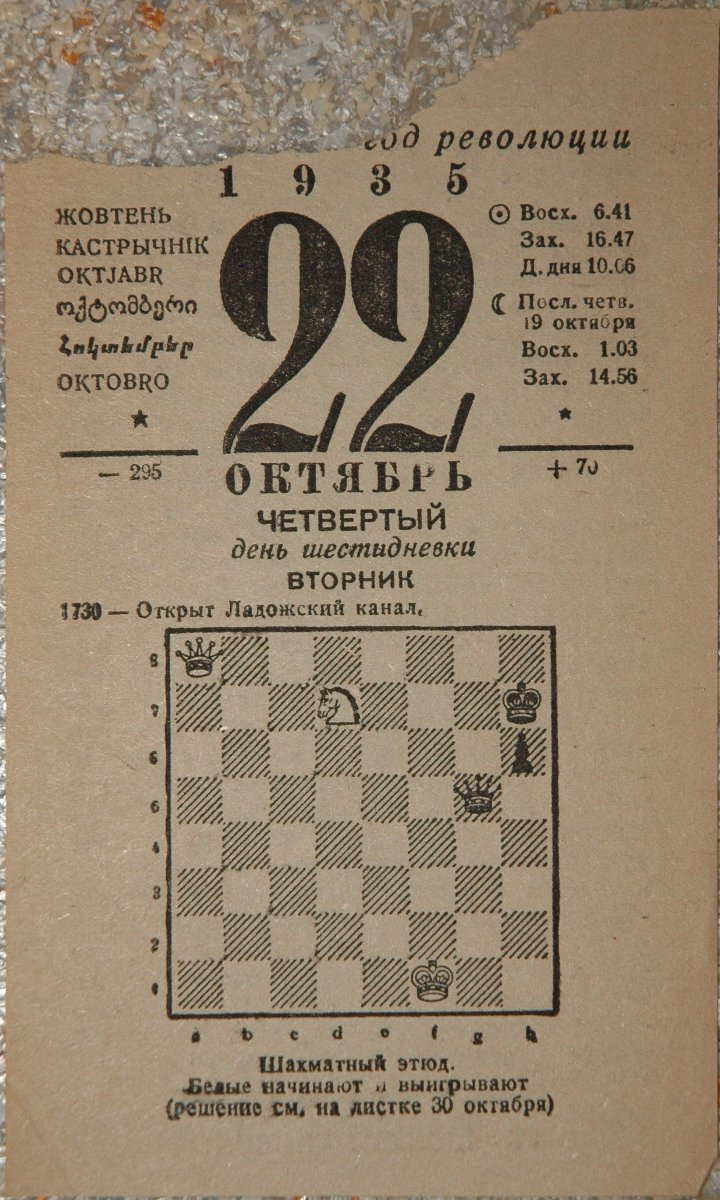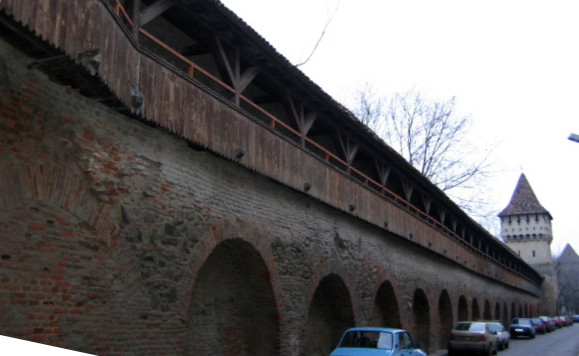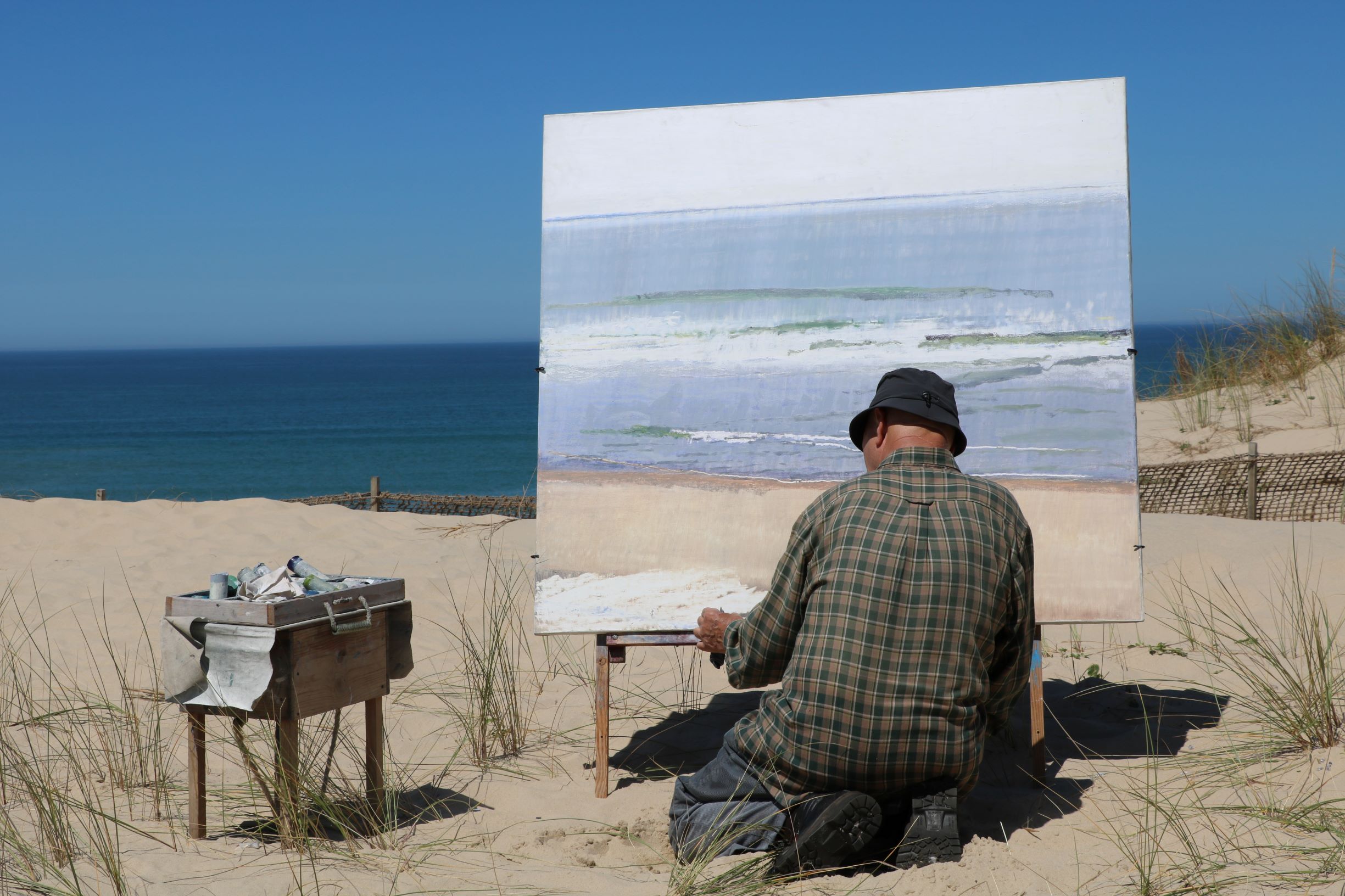|
Friedrich Miess
Rudolph Friedrich Miess (21 August 1854 – 29 May 1935) was an Imperial Austrian-born painter from the Transylvania region, today part of Romania. Although he did numerous portraits, he is best known for his landscapes, which combine the Academic and Impressionist styles. Biography He was born to a family of wealthy Transylvanian Saxon merchants, and pursued that trade until he was twenty-nine. At that time, his interest in art led him to enroll at the Academy of Fine Arts, Vienna, where he studied for two years, then transferred to the Academy of Fine Arts in Munich, where he studied with the history painter, Johann Caspar Herterich. While there, he was also influenced by the works of Wilhelm Leibl, Max Liebermann and Fritz von Uhde."Friedrich Miess: e ... [...More Info...] [...Related Items...] OR: [Wikipedia] [Google] [Baidu] |
Brașov
Brașov (, , ; , also ''Brasau''; ; ; Transylvanian Saxon dialect, Transylvanian Saxon: ''Kruhnen'') is a city in Transylvania, Romania and the county seat (i.e. administrative centre) of Brașov County. According to the 2021 Romanian census, 2021 census, with 237,589 inhabitants, Brașov is the Cities in Romania, 6th most populous city in Romania. The Brașov metropolitan area, metropolitan area was home to 371,802 residents. Brașov is located in the central part of the country, about north of Bucharest and from the Black Sea. It is surrounded by the Southern Carpathians and is part of the historical region of Transylvania. Historically, the city was the centre of the Burzenland (), once dominated by the Transylvanian Saxons (), and a significant commercial hub on the trade roads between Austria (then Archduchy of Austria, within the Habsburg monarchy, and subsequently Austrian Empire) and Turkey (then Ottoman Empire). It is also where the Deșteaptă-te, române!, nationa ... [...More Info...] [...Related Items...] OR: [Wikipedia] [Google] [Baidu] |
Max Liebermann
Max Liebermann (20 July 1847 – 8 February 1935) was a German painter and printmaker, and one of the leading proponents of Impressionism in Germany and continental Europe. In addition to his activity as an artist, he also assembled an important collection of French Impressionist works. The son of a Jewish banker, Liebermann studied art in Weimar, Paris, and the Netherlands. After living and working for some time in Munich, he returned to Berlin in 1884, where he remained for the rest of his life. He later chose scenes of the bourgeoisie, as well as aspects of his garden near Lake Wannsee, as motifs for his paintings. Noted for his portraits, he did more than 200 commissioned ones over the years, including of Albert Einstein and Paul von Hindenburg. Liebermann was honored on his 50th birthday with a solo exhibition at the Prussian Academy of Arts in Berlin, and the following year he was elected to the academy. From 1899 to 1911 he led the premier avant-garde formation in Germany ... [...More Info...] [...Related Items...] OR: [Wikipedia] [Google] [Baidu] |
1935 Deaths
Events January * January 7 – Italian premier Benito Mussolini and French Foreign Minister Pierre Laval conclude an agreement, in which each power agrees not to oppose the other's colonial claims. * January 12 – Amelia Earhart becomes the first person to successfully complete a solo flight from Hawaii to California, a distance of . * January 13 – A plebiscite in the Territory of the Saar Basin shows that 90.3% of those voting wish to join Germany. * January 24 – The first canned beer is sold in Richmond, Virginia, United States, by Gottfried Krueger Brewing Company. February * February 6 – Parker Brothers begins selling the board game Monopoly in the United States. * February 13 – Richard Hauptmann is convicted and sentenced to death for the kidnapping and murder of Charles Lindbergh Jr. in the United States. * February 15 – The discovery and clinical development of Prontosil, the first broadly effective antibiotic, is published in a series of artic ... [...More Info...] [...Related Items...] OR: [Wikipedia] [Google] [Baidu] |
1854 Births
Events January–March * January 4 – The McDonald Islands are discovered by Captain William McDonald aboard the ''Samarang''. * January 6 – The fictional detective Sherlock Holmes is perhaps born. * January 9 – The Teutonia Männerchor in Pittsburgh is founded to promote German culture. * January 20 – The North Carolina General Assembly in the United States charters the Atlantic and North Carolina Railroad, to run from Goldsboro through New Bern, to the newly created seaport of Morehead City, near Beaufort. * January 21 – The iron clipper runs aground off the east coast of Ireland, on her maiden voyage out of Liverpool, bound for Australia, with the loss of at least 300 out of 650 on board. * February 11 – Major streets are lit by coal gas for the first time by the San Francisco Gas Company; 86 such lamps are turned on this evening in San Francisco, California. * February 13 – Mexican troops force William Walker and his ... [...More Info...] [...Related Items...] OR: [Wikipedia] [Google] [Baidu] |
Sibiu
Sibiu ( , , , Hungarian: ''Nagyszeben'', , Transylvanian Saxon: ''Härmeschtat'' or ''Hermestatt'') is a city in central Romania, situated in the historical region of Transylvania. Located some north-west of Bucharest, the city straddles the Cibin River, a tributary of the Olt River. Now the seat of Sibiu County, between 1692 and 1791 and 1849–65 Sibiu was the capital of the Principality of Transylvania. Until 1876, the Hecht hause in Sibiu served as the seat of the Transylvanian Saxon University. Nicknamed ''The Town with Eyes'' for the eyebrow dormers on many old buildings, the town is a popular tourist destination. It is known for its culture, history, cuisine, and architecture. In 2004, its historical center was added to the tentative list of UNESCO World Heritage Sites. Sibiu was subsequently designated the European Capital of Culture in 2007, along with Luxembourg City. One year later, it was ranked "Europe's 8th-most idyllic place to live" by ''Forbes''. Sibi ... [...More Info...] [...Related Items...] OR: [Wikipedia] [Google] [Baidu] |
Brukenthal National Museum
The Brukenthal National Museum (; ) is a museum in Sibiu, Transylvania, Romania, established in the late 18th century by Samuel von Brukenthal (1721-1803) in his city palace. Baron Brukenthal, governor of the Grand Principality of Transylvania established his first collections around 1790. The collections were officially opened to the public in 1817, making the museum the oldest institution of its kind on the territory of modern-day Romania. Today, in its extended form, it is a complex comprising six museums, which, without being separate administrative entities, are situated in different locations around the city and have their own distinct cultural programmes. The Art Galleries The Art Galleries are located inside the Brukenthal Palace and include a number of about 1,200 works belonging to the main European schools of painting, from the 15th to the 18th century: Flemish-Dutch, German and Austrian, Italian, Spanish and French Schools. The Galleries also include collect ... [...More Info...] [...Related Items...] OR: [Wikipedia] [Google] [Baidu] |
Count Ottokar Von Czernin
Ottokar Theobald Otto Maria ''Graf'' Czernin von und zu Chudenitz (; 26 September 1872 – 4 April 1932) was an Austro-Hungarian diplomat and politician during the time of World War I, notably serving as Foreign Minister from 1916 to 1918. Life and career Family Czernin was born in Dymokury () into an ancient Bohemian noble House of Czernin. In 1897, he married Countess Marie Kinsky von Wchinitz und Tettau (1878–1945) in Heřmanův Městec (). His younger brother Otto was also a diplomat and served ''inter alia'' as envoy to Sofia during World War I. Early career After studying law at the Charles-Ferdinand University in Prague, he joined the Austro-Hungarian foreign service in 1895 and was dispatched to the embassy in Paris. In 1899, he was sent to The Hague, but only three years later he had to resign as a result of a lung infection and retired to his Bohemian estates. In 1903, Count von Czernin became a member of the Bohemian Lower House as a representative of th ... [...More Info...] [...Related Items...] OR: [Wikipedia] [Google] [Baidu] |
Die Karpathen
Die Karpathen (''The Carpathians'') was a German-language publication that appeared twice a month in Kronstadt, Austria-Hungary (now Braşov, Romania) between 1907 - 1914. Subintitled ''Halbmonatsschrift für Kultur und Leben '' (Bimonthly publication for culture and life), the work was originally posted by Adolf Meschendörfer. ''Die Karpathen'' featured articles on science and economics but Meschendörfer affirmed that he supported the "Saxons' need to escape from the traditional frame and from the vision they had about themselves". As an example of the themes that appeared in the magazine, below is a summary of topics from a magazine from the third year of appearance, first semester, October 1909 - March 1910: *J.Teutsch: ''Vorgeschichtliche Funde und Fundorte im Burzenlande'' (Discoveries and archeological sites in Ţara Bârsei) *A.Höhr: ''Das alte Schässburg'' (The old Sighişoara) *E.Buchholzer: ''Die soziale Stellung unserer Mittelschulprofessoren nach ihrer materiell ... [...More Info...] [...Related Items...] OR: [Wikipedia] [Google] [Baidu] |
Holy Trinity Cathedral, Sibiu
The Holy Trinity Cathedral, Sibiu (), located at 35 Mitropoliei Street, Sibiu, Romania, is the seat of the Romanian Orthodox Archbishop of Sibiu and Metropolitan of Transylvania. It was built in the style of a Byzantine basilica, inspired by Hagia Sophia, with the main spires influenced by Transylvanian church architecture and Baroque elements. The idea of building an Orthodox cathedral in Sibiu began with Metropolitan Andrei Șaguna, who in the autumn of 1857 asked Emperor Franz Joseph I for permission to send a circular to his diocese requesting that priests and laymen give donations. He sent the letter before Christmas that year, and the first donor was the Emperor himself, who gave 1000 gold coins, followed by the governor of Transylvania with 50, Șaguna with 2000 florins, and many others. Donations continued to come in following Șaguna's death in 1873; the cornerstone was laid on 18 August 1902, when Ioan Mețianu was Metropolitan. In order to free the space to build the ... [...More Info...] [...Related Items...] OR: [Wikipedia] [Google] [Baidu] |
Margarete Depner
Margarete Depner (née, Margarete Scherg; 22 March 1885 - 2 September 1970) was a Romanian sculptor, painter and illustrator of Transylvanian Saxon ancestry. Born in Braşov in 1885, she died in 1970 in the same city. In 1931, she studied at the Berlin studio of Josef Thorak Josef Thorak (7 February 1889 in Vienna, Austria – 26 February 1952 in Bad Endorf, Bavaria) was an Austrian-German sculptor. He became known for oversize monumental sculptures, particularly of male figures, and was one of the most promi .... References External links * {{DEFAULTSORT:Depner, Margarete 1885 births 1970 deaths 20th-century Romanian illustrators Romanian women illustrators People from Brașov Transylvanian Saxon people 20th-century Romanian painters 20th-century Romanian sculptors 20th-century Romanian women sculptors 20th-century Romanian women painters ... [...More Info...] [...Related Items...] OR: [Wikipedia] [Google] [Baidu] |
Hans Mattis-Teutsch
Hans may refer to: __NOTOC__ People * Hans (name), a masculine given name * Hans Raj Hans, Indian singer and politician ** Navraj Hans, Indian singer, actor, entrepreneur, cricket player and performer, son of Hans Raj Hans ** Yuvraj Hans, Punjabi actor and singer, son of Hans Raj Hans * Hans clan, a tribal clan in Punjab, Pakistan Places * Hans, Marne, a commune in France * Hans Island, administrated by Greenland and Canada Arts and entertainment * ''Hans'' (film) a 2006 Italian film directed by Louis Nero * Hans (Frozen), the main antagonist of the 2013 Disney animated film ''Frozen'' * ''Hans'' (magazine), an Indian Hindi literary monthly * ''Hans'', a comic book drawn by Grzegorz Rosiński and later by Zbigniew Kasprzak Other uses * Clever Hans, the "wonder horse" * ''The Hans India'', an English language newspaper in India * HANS device, a racing car safety device * Hans, the ISO 15924 code for Simplified Chinese characters See also *Han (other) Han may refer t ... [...More Info...] [...Related Items...] OR: [Wikipedia] [Google] [Baidu] |
Plein Air
''En plein air'' (; French for 'outdoors'), or plein-air painting, is the act of painting outdoors. This method contrasts with studio painting or academic rules that might create a predetermined look. The theory of 'En plein air' painting is credited to Pierre-Henri de Valenciennes (1750–1819), first expounded in a treatise titled ''Reflections and Advice to a Student on Painting, Particularly on Landscape'' (1800), where he developed the concept of landscape portraiture by which the artist paints directly onto canvas ''in situ'' within the landscape. It enabled the artist to better capture the changing details of weather and light. The invention of portable canvases and easels allowed the practice to develop, particularly in France, and in the early 1830s the Barbizon School of painting in natural light was highly influential. Amongst the most prominent features of this school were its tonal qualities, colour, loose brushwork, and softness of form. These were variants tha ... [...More Info...] [...Related Items...] OR: [Wikipedia] [Google] [Baidu] |







